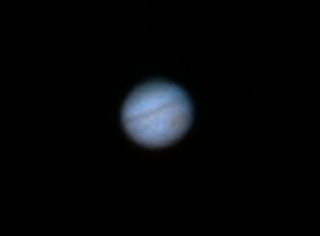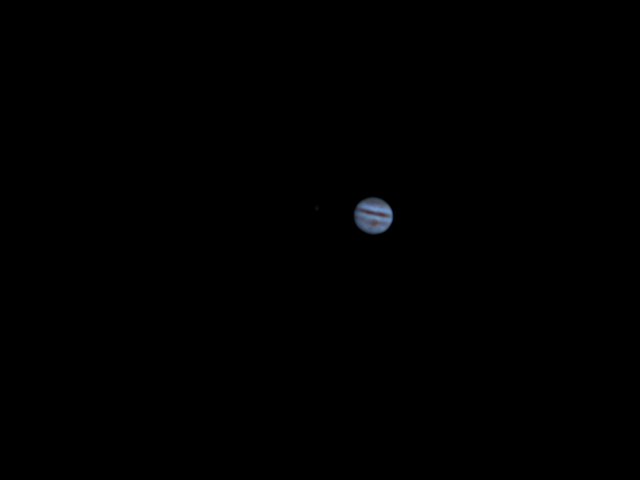Hey, I am on Mastodon now and this post is basically to confirm my identity there, so feel free to otherwise ignore this.
Friday, November 25, 2022
I'm on Mastodon
A Harvest of Planets
In my last post (back in August!) I posted this image of Jupiter taken with my Unistellar eVscope.
 |
| Jupiter, with a hint of the Great Red Spot (right) |
It's not super great (and it was up-scaled from the original), but it was by far the best image of Jupiter I had ever taken with an eVscope. Of course, an eVscope wasn't designed with planets in mind. Instead, it is a wide-field telescope. That means that the telescope is great at capturing large objects like nebulae, but not for planets.
At least that was true until a few days ago when Unistellar released verson 2.2.0 of their app. The update is specifically to improve the telescope's ability to image planets. It does this (presumably) in the same way that many planetary imagers do, by capturing video, tossing out the bad frames that have been blurred by Earth's atmosphere and then keeping and stacking the best ones. I had looked in to doing this and it seemed to involve multiple software packages to handle the various steps and, frankly, it seemed like kind of a lot of work --so much so that I likely wasn't going to go down that road. The good news is now I don't have to, as the app now does it all for me and the results are stunning.
Have a look. Here's how Jupiter looks without and then with the new app running:
Okay, that blink is pretty fast, so here's a still of how Jupiter looks with the new imaging:
Yes, the image doesn't compete with the greats like Damian Peach, but it is a vast improvement on what was possible before. Jupiter's Great Red Spot (GRS) was easily visible, along with its North and South Equatorial Belts.
The GRS was so prominently displayed that I decided to shoot Jupiter every 5 minutes for an hour to see if I could capture Jupiter's fast rotation. Here's the result:
I aligned the images by hand (so the alignments aren't perfect), but the result makes me happy. Jupiter spins once in just about 10 hours, so one hour of Earth time nicely reveals its rotation.
The resolution here is just barely good enough that shadows of Jupiter's four major moons should be visible when they land on Jupiter's cloud tops and as the moons themselves should be visible when they transit across the face of Jupiter.
Look just below the middle of the South Equatorial Belt. See the little white spot? That's likely Jupiter's moon Europa as it was passing in front of Jupiter.
This technique works on Mars and Saturn too. Of course, Mars and Saturn are smaller in apparent size than Jupiter is, so there's less detail to see, but again, the improvement is really stellar. Previously Mars was nothing more than a reddish-orange dot, with no detail visible at all.
On the left is the view of Mars that was facing Earth as shown in the SkySafari app on the right is my image of Mars. It is still quite small (and enlarged here), but surface detail are clearly visible. I'm no Mars expert, but I believe that the dark area near the middle is Meridiani Planum. The Mars Opportunity rover landed there in 2004. I'll be back to capture other features of Mars soon while it is close to Earth.
Finally, here's Saturn:





